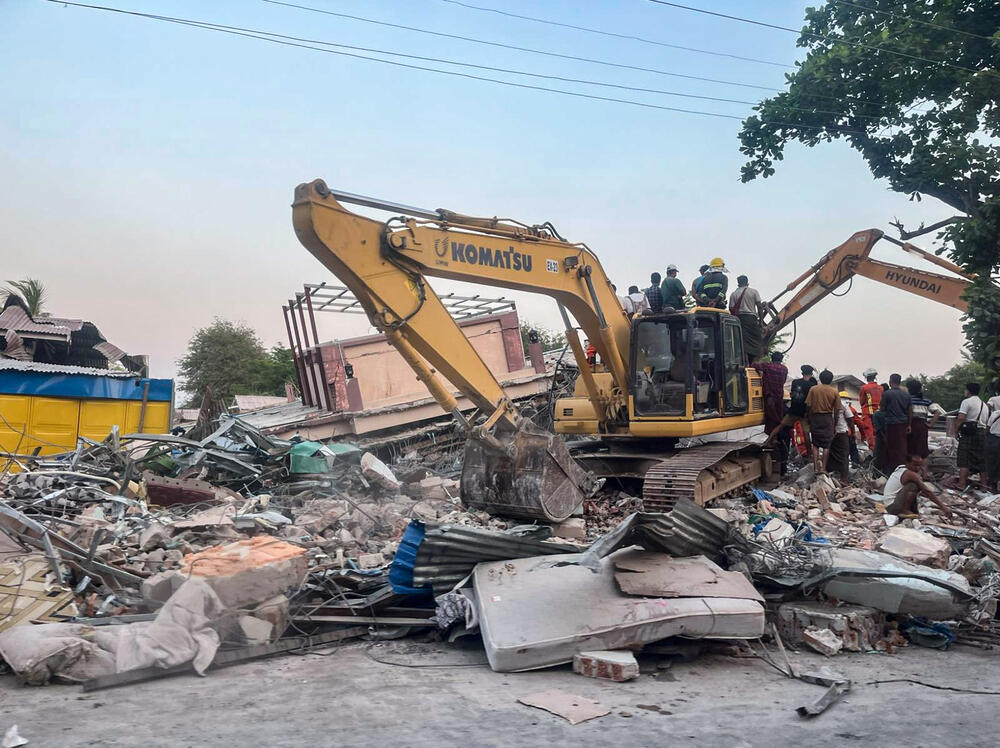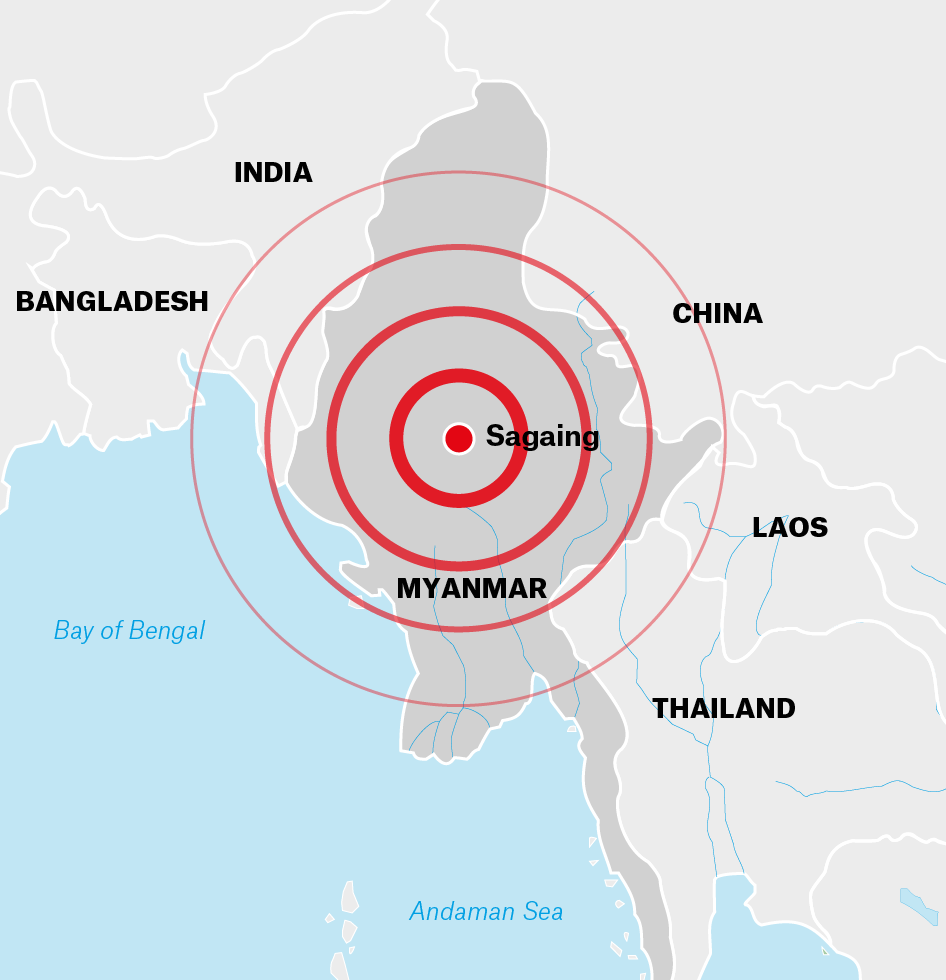Myanmar earthquake: What is MSF doing and how can I help?
On Friday 28 March, a 7.7 magnitude earthquake struck central Myanmar. From the epicentre in the city of Sagaing, the tremor was felt across Thailand, Bangladesh, China and Laos.
Around 3,800 people were killed, 5,100 injured, and about 116 remain missing, according to the Office for the Coordination of Humanitarian Affairs, with about 207,000 people displaced.
It is estimated that over 17.2 million people are living in affected areas, with over 9.1 million exposed to the strongest tremors. Two million newly affected people are in urgent need of assistance, adding to the 4.3 million who were already in need before the quake.
Electricity, water, and telecommunications remain disrupted in the hardest-hit areas, hampering relief efforts.
How is MSF responding in Myanmar?
MSF teams have been working in Myanmar since 1992, focusing on HIV and tuberculosis care, emergency responses to disasters and conflict, and supporting the persecuted Rohingya people in Rakhine state. Our teams have been responding to the earthquake, focusing on the following areas:
- Mental health: In Mandalay our teams trained more than 200 volunteers (professors, teachers, medical students, doctors and nurses) in providing psychological first aid. These mental health teams are now providing psychological first aid and counselling to affected communities
- WatSan: MSF teams are improving water, sanitation, and hygiene conditions in Mandalay in hospitals and camps in the surrounding villages. They are installing handwashing basins, water taps, pressure pumps, water tanks and soap dispensers and setting up latrines, and have restored over 200 bore holes. They are also supporting damaged hospitals
- Medical care: Mobile clinics provide basic health care including services for patients with non-communicable diseases in more than eight locations in Mandalay and Mandalay region and at two locations in Sagaing city.
- Health promotion and health education
- Shelter and distribution: in total 2307 non-food item (NFI) kits and 600 mosquito nets have been distributed in Mandalay city and region and 2101 in Inle Lake, Southern Shan. These kits usually contain: a lighter, blanket, tarp, mosquito net, jerry can, soap, towel, toothbrush, toothpaste, menstrual pads, bucket with lit, hairbrush, chlorine, nappy).
- Health facility: Our teams supported hospitals that were damaged by the earthquake with logistical rehabilitations. For example, to Tadau Hospital, we donated a large tent to house the patients and supplied 10 hospital beds. They also installed over 15 water tanks in different hospitals.
How can I help MSF in Myanmar?
Right now, our teams are responding in Myanmar and assessing the medical and humanitarian needs
This is only possible because of donations from people like you.
By giving to our general funds today, you will be helping to ensure we can respond to emergencies around the world, like the earthquake in Myanmar.
Please donate today to support our emergency teams.
Click here to learn more about how we spend your money.
MSF and natural disasters
With over 50 years' of experience, we are experts in rolling out emergency responses in complex settings.
Within a matter of minutes, natural disasters such as tsunamis, earthquakes and hurricanes can overwhelm an entire population.
Hundreds and even thousands of people can be injured or traumatised by the loss of family, friends and homes.
Clean water, healthcare and transport are also often casualties in these disasters. Rapid medical care and coordinated emergency response are vital to protect survivors.
From large-scale catastrophes to local emergencies, MSF’s network of aid workers and supplies around the world means we can quickly respond to disasters.
In 2023, MSF distributed relief items to 462,200 families.

